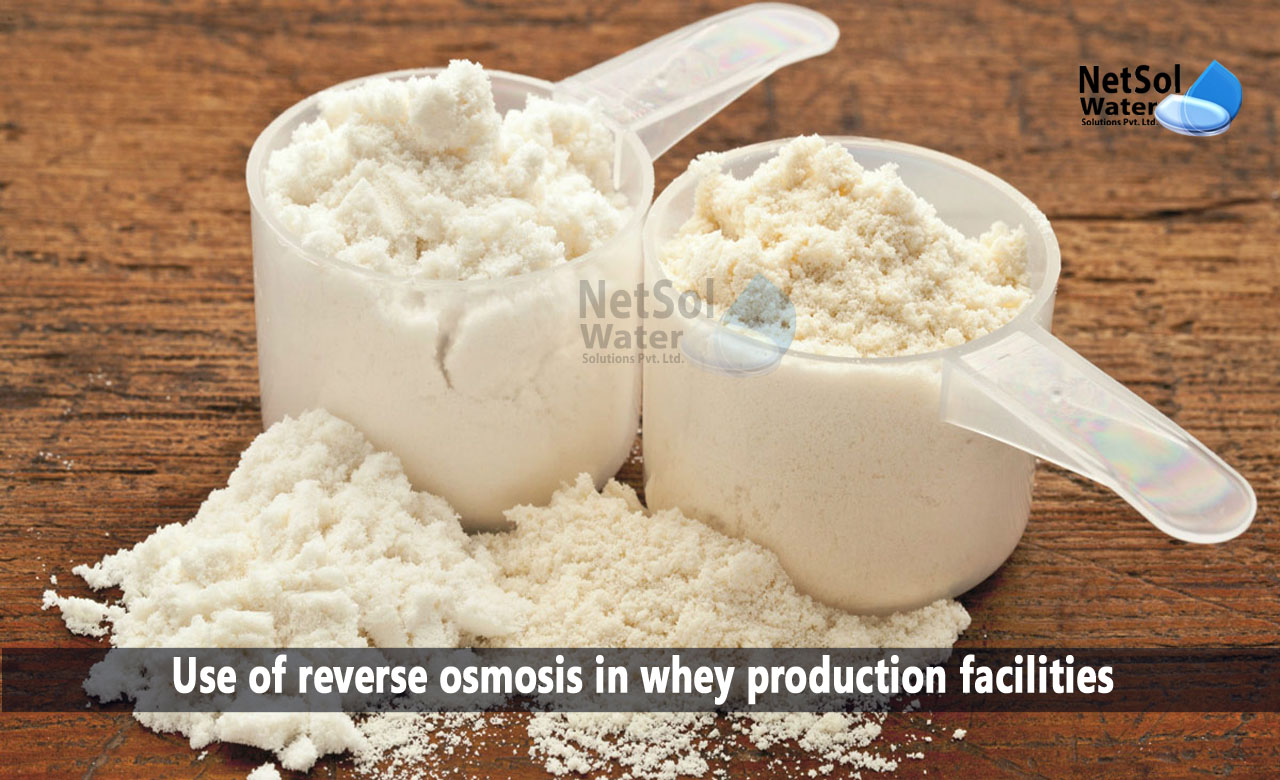Prior to shipment or additional processing, whey concentration by reverse osmosis (RO) is widely used to decrease volumes and increase solids content. The term "RO" refers to a pressure-driven membrane separation process, in which various components of a fluid mixture are separated using a membrane.
Reverse osmosis membranes have pores that are less than 0.001 micron in size, and separation is based on the molecular size of the constituents of the fluid, in contact with the membrane as well as chemical interactions between them. In this procedure, salts and colloidal particles are retained while pressure is applied to force water molecules through membrane pores.
What is the use of reverse osmosis in whey production industries?
Sweet whey can be pre-concentrated to remove water at lower solids with higher energy efficiency, and thus increases the capacity of the current evaporators. Total solids (TS) levels between 10 and 25 percent can be attained effectively and practically. Water is removed using reverse osmosis membranes, which have no effect on the components of sweet whey's relative composition.
The quality of the permeate produced by RO systems relies on the feed's composition, quality, and concentration. The amount of components in the permeate increases with increasing TS. Organic solids will typically be present in RO permeate in small but quantifiable levels.
Operating parameters include feed flow rate, pressure, temperature, pH and microbiological quality of feed stream, feed concentration, and fouling characteristics of the membrane, for various components having a significant impact on the process performance.
Washing and recovery
You may extract hidden value from your process and waste streams by recovering water from condensate, rinse processes, and low-solid effluents. Up to 90% of the volume of wastewaters that would be lost through discharge, can be recovered thanks to RO technology.
You can purchase the following water recovery benefits: cheaper water costs, lower energy costs, lower raw water treatment costs, resource reuse, and regulatory compliance.
Use of RO + NF technology
To concentrate whey product streams, RO and NF can be combined. It is possible to reach levels of 30–40% TS with these system applications. For greater effectiveness and a larger protein production, these applications enable UF operation at lower solids levels. By using less energy and increasing bulk density, these techniques enhance drying operations.
Conclusion
With the exception of final rinses of processing equipment, reverse osmosis (RO) polishing of the streams can yield water that can be used straight for washing purposes. To meet the requirements for potable water, polisher permeate can be further conditioned.
In order to maintain the permeate at or below certain levels, mechanisms must be in place. To prevent bacterial growth and maintain a standard COD value, approved agents with a suitable retention time, such as chlorine, may be employed. To ensure adequate water quality, chemicals must be added using an automatic proportioning mechanism, before the water enters the storage tank.
Get high quality RO Plants from experts!
Netsol Water provides design and manufacturing services to create unique RO Plants. Whether you require a water treatment plant for commercial or industrial use, we will assist you in selecting the best solution as per your need and requirement.
Contact us right now to find out more about our water treatment products and services. All kinds of chemical, physical, and biological impurities can be effectively eliminated, by our water treatment systems. For further information or to make a product purchase, contact us at +91-9650608473 or drop a mail at enquiry@netsolwater.com



